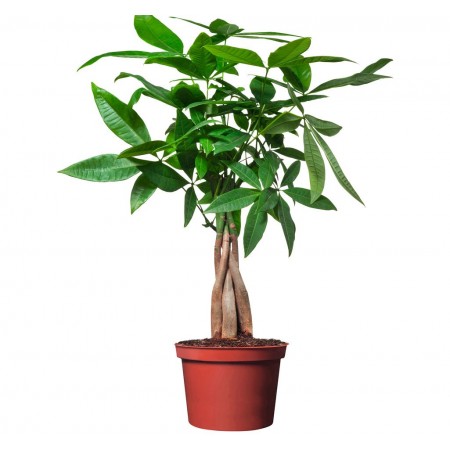Growing Pachira

Not so long ago, pakhira was a rather rare occurrence in the homes of modern flower growers, but now you can increasingly find this evergreen tree that can grow to 3-meter height. Pakhira refers to bottled plants that can accumulate moisture in the stems, so a number of important conditions should be observed in caring for it.
Room decor
Although the homeland of pahira is a place with an arid climate, this plant does not tolerate too dried earthen clods. Yes, you do not need to water it as often as other plants, but you also should not forget to add moisture to the soil. As a rule, the most optimal conditions for a flower are well-lit rooms, where there is a large amount of scattered solar ultraviolet radiation.
As for the humidity in the room, it can be maintained at an average level. The flower is characterized by slow growth, which affects its life expectancy. It is far from necessary to constantly moisten the leaves from the spray gun or wipe them with a damp cloth. But occasionally it will not be out of place to remove dust and dirt from them - this will free up the pores through which the pachira shares pure oxygen with the tenants.
Air temperature
If you installed a flowerpot with pahira at home, then you should provide the plant with a constant warm atmosphere. The flower does not tolerate sharp temperature changes, so in winter, when ventilating the room, you should move the flowerpot to another room, protecting it from drafts and cold air.
The optimal air temperature for pahira in the summer is an indicator within 18-23 degrees of heat, and in winter it must be placed where the temperature does not drop below 16 degrees Celsius. The fact is that the pakhira should rest and gain strength in the winter months before the next flowering period, so that the number of watering and top dressing should be reduced to a minimum.
Breeding
The most suitable moment for the propagation of pachira will be the time when the flower reaches a 2-meter height and new shoots begin to form on its stems. Most often they are cut off at the end of summer, placing processes in containers with loose substrate. It is also recommended to cover the shoot with a film, protecting it from various diseases due to changing conditions of detention.
If you plan to propagate pachira seeds, then they should be placed in a container with a small layer of soil. For successful growth, it is recommended to maintain the temperature in the room with young plants within 25-27 degrees of heat, spraying them periodically with warm water. If everything is done as a rule, then the first shoots will appear a few weeks after the drawdown.